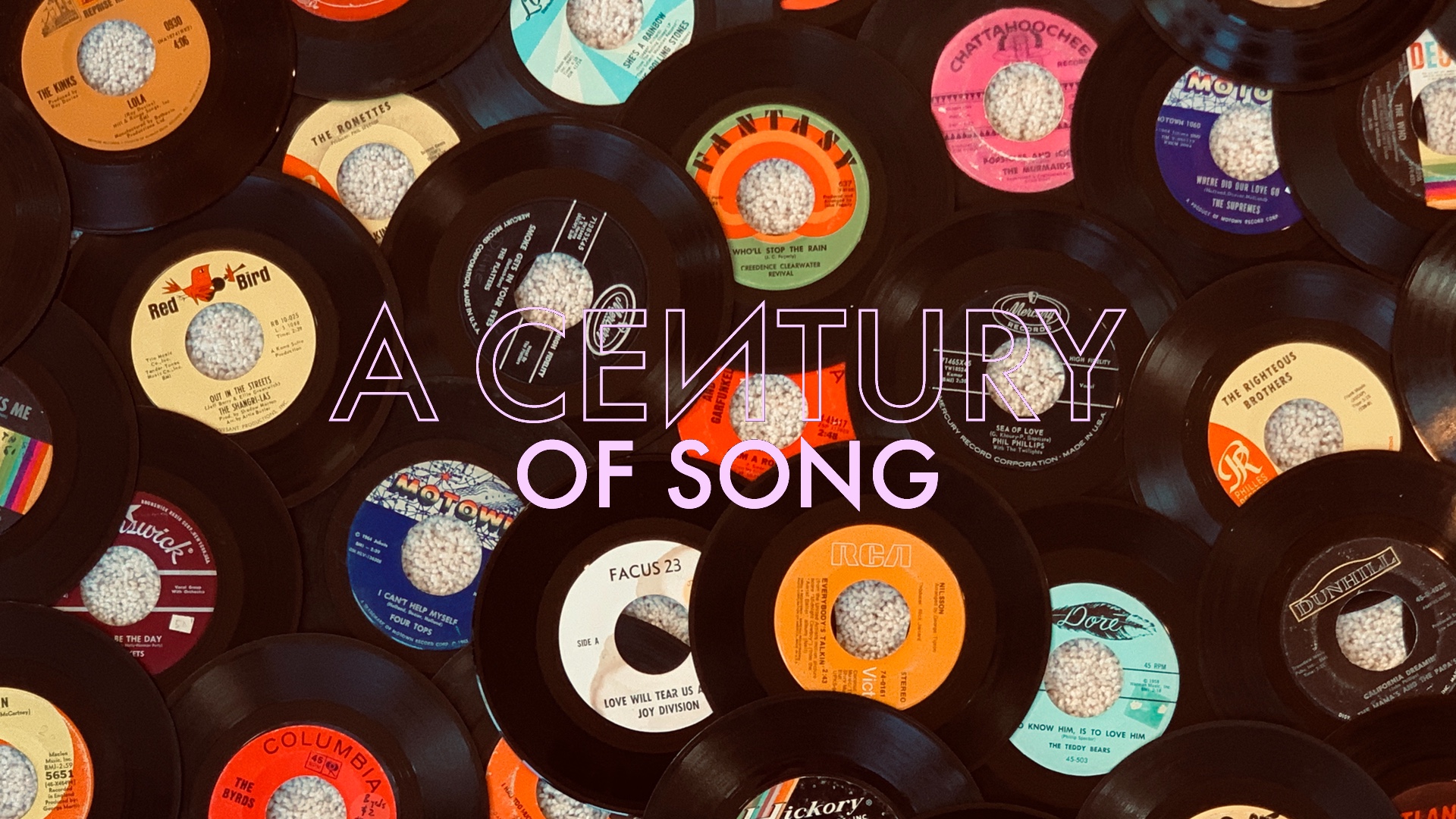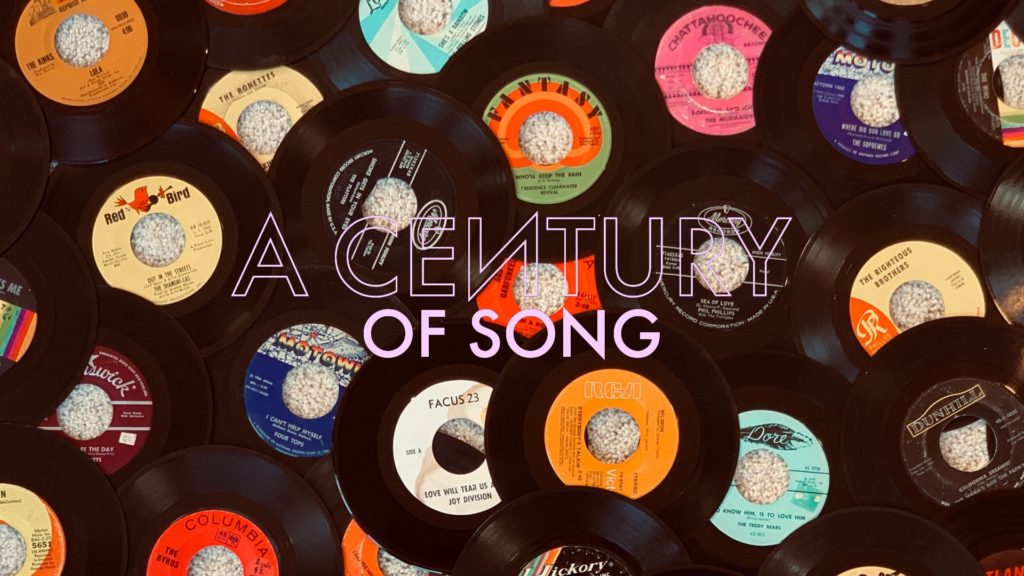
A Century of Song is an attempt to summarize 100 years of popular music through 1000 carefully chosen tracks. Included within this list are landmark singles, stellar album cuts, huge hits, hidden gems, and more than a few personal favorites. Read the introduction for the project here, and enjoy the embedded videos and Spotify playlist.
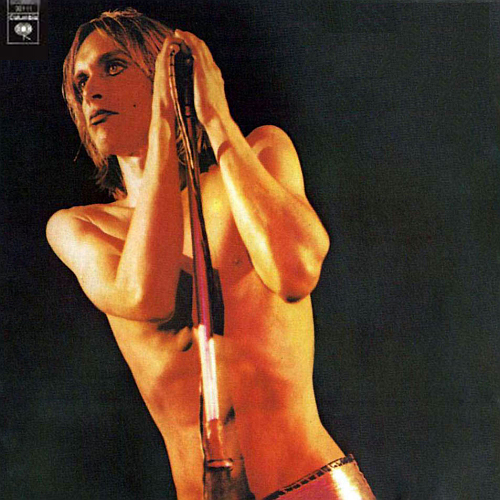
160
The opening track to The Stooges’ third and final album, “Search and Destroy” was the perfect realization of the Ann Arbor band’s prescient sound. Punk before punk, “Search and Destroy” upped the ante beyond anything heard in rock music up to that point, even surpassing The Stooges’ revolutionary earlier work.
With its title inspired by the American military efforts in Vietnam, “Search and Destroy” was chaotic enough to invoke a still-ongoing conflict that had already – in length – surpassed any other campaign in the nation’s history. Vietnam is also hinted at in Iggy Pop’s opening salvo – still among the most iconic album opening lines in all of rock music:
I’m a streetwalking cheetah with a heart full of napalm
I’m a runaway son of the nuclear A-bomb
Captured by Iggy’s stark production, “Search and Destroy” is a pummeling statement of intent. James Williamson’s guitar is pushed to the max, while the rhythm section of the Asheton brothers – Ron (bass) and Scott (drums) – bashes at full force, in an attempt to make their presence felt in David Bowie’s mix. Iggy would eventually push all elements to the forefront in a 1997 remix of Raw Power with Bruce Dickinson.
While “Search and Destroy” is renowned for what it ultimately inspired, it remains a gripping listen on its own merits. The wild, anarchic power of the track may have had little sonic precedent, but there was still an impressive piece of song craft buried within its thorny exterior.
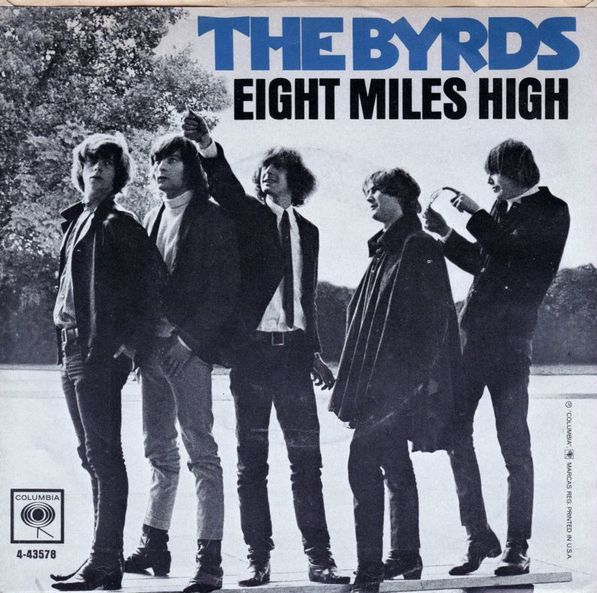
159
One of the first instances of what would soon be labeled “psychedelia,” “Eight Miles High” was a game-changing single for The Byrds, and arguably pop music as a whole. A far cry from the jangly folk rock of the Los Angeles band’s earlier work, the song would dramatically expand the acceptable parameters for a pop single, and help to usher in a period of bold experimentation in rock music.
“Eight Miles High” was initially conceived during The Byrds’ first flight to London – “Rain, grey town, known for its sound” – on a trip that would find them billed by some members of the British press as “America’s answer to The Beatles.” Of course, many American radio stations refused to accept a literal interpretation of the lyrics, and banned “Eight Miles High” for its supposed drug references.
Then again, it wasn’t too much of a stretch to assume that “Eight Miles High” had something to do with drugs. Drawing influence from Ravi Shankar and John Coltrane, the song incorporated elements of raga, drone, and atonalism to create a decidedly trippy sound. It’s Roger McGuinn’s twelve-string Rickenbacker that provides the haunting recurring motif, and the song’s audacious guitar solo.
Released in March of 1966, “Eight Miles High” was on the outermost forefront of the psychedelic scene. Little like it had been heard before, but by year’s end, the song’s influence on rock groups on both sides of the Atlantic was undeniable.
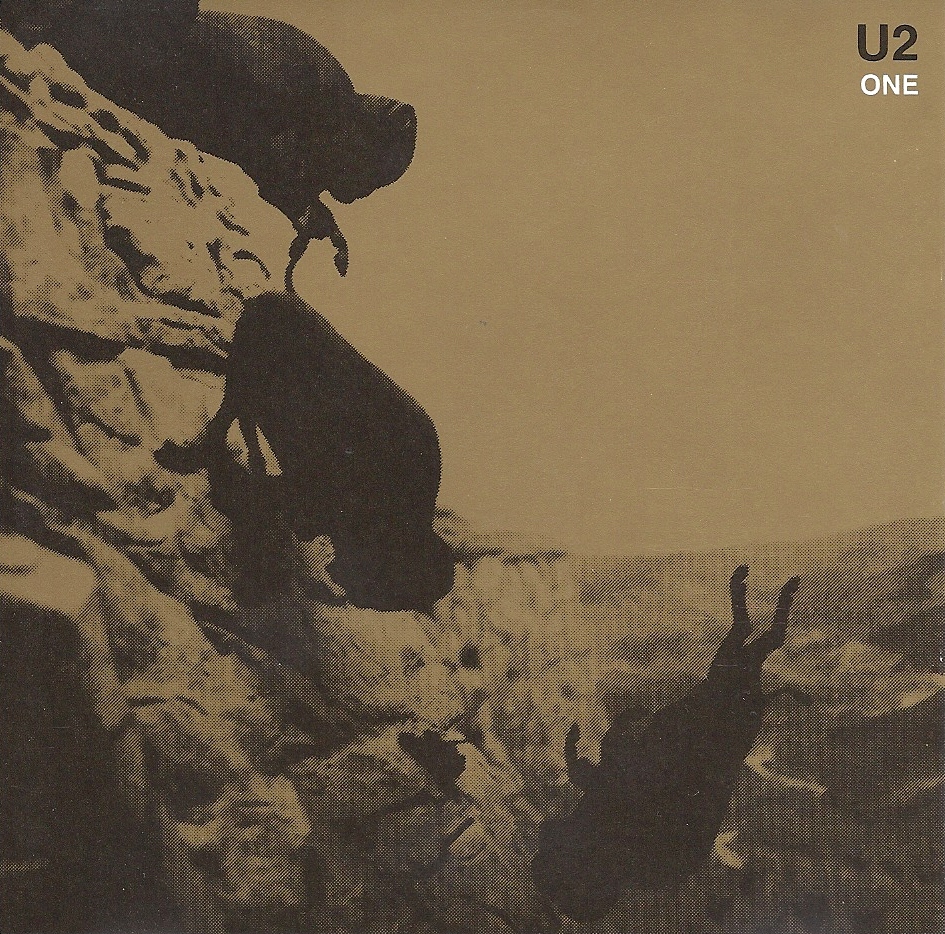
158
As Bono once put it, 1991’s Achtung Baby was “the sound of four men chopping down The Joshua Tree.” While it represented the band’s first foray into a bold new artistic direction, at its core, Achtung was still unquestionably a U2 album. Nowhere more did it retain the group’s earnest, irony-free past than on its stirring centerpiece, “One.”
Having spent several of my formative years as something of a U2 superfan, I learned that Bono – like Paul McCartney – loves to have an anecdote at the ready about his most important songs. The line on “One” is that it was stumbled upon during a particularly low point in the sessions for Achtung – a time in which the band were pondering a break-up in the midst of a reinvention.
There’s a sense of desperation to “One” that translates far beyond its most literal interpretation as a love/breakup song, lending both credence to its own creation myth, and a universality that reaches for something higher. It’s what made it a top ten hit across the globe. It’s what made it a track befitting of its usage in an AIDS awareness campaign. It’s what made for a powerful cover by an aging Johnny Cash.
As I’ve written in other entries, U2 fandom carries some baggage with it. However, for a band to have become so ubiquitous as to engender such a harsh backlash, they had to have done something right in the first place. In my estimation, U2 did outstanding work for an impressive amount of time. This song was the very best of that work.
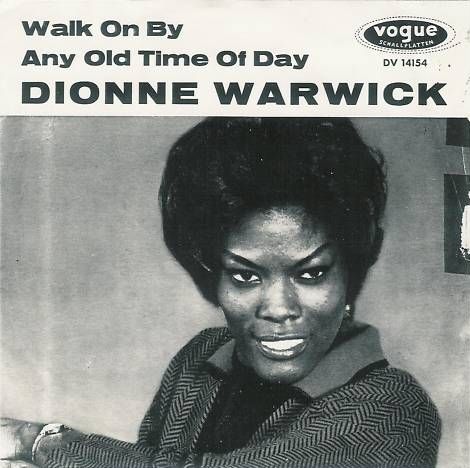
157
The Wikipedia entry for “Walk On By” lists over a dozen different charting versions of the song. While everyone from Isaac Hayes to The Stranglers would make it a hit, the Burt Bacharach and Hal David composition was never better than in its original form: a 1964 top ten single for Dionne Warwick.
Inspired by the lounge sounds that Bacharach had come to personify, Warwick’s “Walk On By” is given a gentle, but affecting, reading. There is a vulnerability to her performance that captures the despondency of Hal David’s lyrics, without resorting to the melodrama that marred many contemporaneous singles.
Bacharach’s arrangement pulls out several of his usual tricks: plaintive strings, sparse percussion, and a trumpet “response” that could only be his work. Where the song is elevated to the realm of the greats is in the cascading piano melody that comes with each chorus, and is punctuated by backing vocals that included Warwick’s younger sister, Dee Dee.
“Walk On By” had a subtle sophistication to it that stood in contrast to much of what filled the pop charts in the mid-sixties. However, its combination of melody, production, and performance would make it one of the most successful and enduring singles of its time.
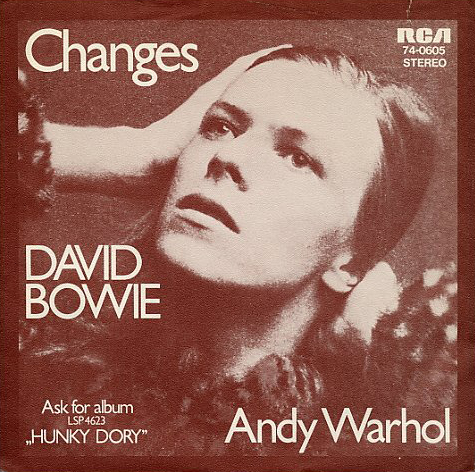
156
Could David Bowie ever have a more appropriate theme song than “Changes”? Over a career that spanned half a century, Bowie invented and reinvented himself so many times that any work that found him retracing his past steps was… Wait a minute. Did Bowie have any work that found him retracing his past steps?
Released as the first single from 1971’s Hunky Dory, “Changes” was the first glimpse of the album that truly established Bowie as one of the premier songwriters of his generation. He had teased greatness before, but Hunky Dory was his first front-to-back classic album – one that displayed a newfound confidence on a set of songs with stunning range.
“Changes” found Bowie flirting with R&B more than on any of his previous work, and his dual saxophone performance gave the song a sophisticated undercurrent that would become a critical element to the glam rock sound that he would soon pioneer. On the eve of that even larger artistic transformation, Bowie’s lyrical turn toward generational politics becomes all the more poignant:
And these children that you spit on
As they try to change their worlds
Are immune to your consultations
They’re quite aware of what they’re goin’ through
“Changes” would ultimately serve as a calling card for Bowie, and rock music in the 1970s. While he would follow his muse to previously unimagined places, Bowie never lost sight of the singer-songwriter that he began as. That dynamic is previewed, and reflected, in this outstanding track.
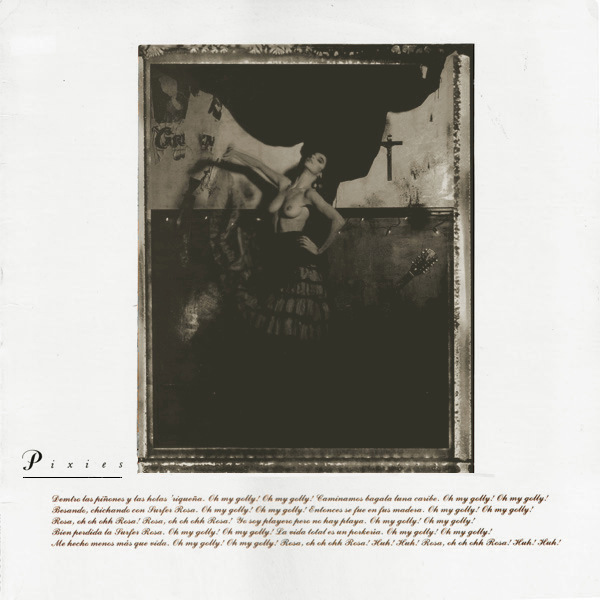
155
I have a somewhat odd story with Pixies. For starters, they were actually the first live band that I ever saw: though it was as the opener for U2, on the initial leg of the ZooTV tour. It wasn’t until five years later, in 1997, that I bought my first Pixies album. By then, I already had – what were at the time – all three of Frank Black’s solo records. I loved those albums – particularly 1994’s Teenager of the Year – but for whatever reason, I just took my time getting around to his “other” work.
I started with a used copy of Doolittle. Within a matter of weeks, I had purchased the group’s entire catalog. Throughout the latter half of 1997, Pixies were virtually the only band that could compete with Radiohead for my attention. For the next several years, I would quite sincerely refer to the long-dormant group as my favorite band.
By the summer of 1999, I was as much of a completist as one without easy access to import singles could be. I had the useful-but-inessential Death to the Pixies compilation, the not-super-necessary Pixies at the BBC, and the nearly worthless 1999 tribute album, Where Is My Mind? I spent my scant non-academic time on the internet searching for interviews, articles, and whatever other ephemera I could find. This was now my band.
That October – like seemingly every other male between the ages of 18-30 – I saw Fight Club. While posturing for cool points was practically an art form among my circle of friends, I was not cynical enough to disparage the use of “Where Is My Mind?” in the film’s closing scene. I was thrilled about it.
Fight Club was not a breaking point for me, but I can now see it as a moment in which my band started to belong to others. I was over the fucking moon when they merely hinted at a reconciliation in 2003, and yet, would be left somewhat perplexed by the enormity and excitement of the crowd when I saw their first major reunion performance at Coachella that next spring.
Apparently, this group that I had championed to anyone within earshot had a lot of other people doing the same thing. They weren’t mine anymore, but I loved them anyway. I still do, even if every new tour or merely decent new album chips away at the mystique of the band’s salad days. I still love them, and this is the best song that they ever made.
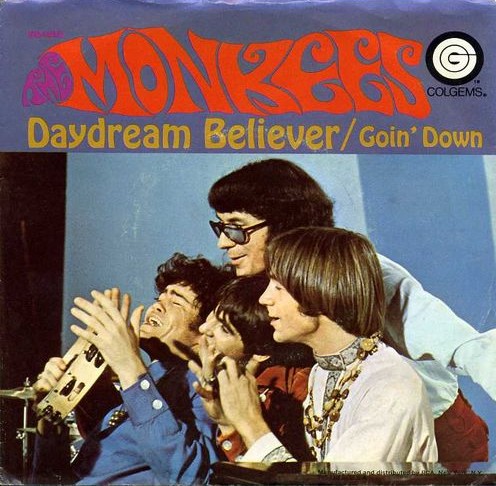
154
Whether performed by themselves or by the same studio musicians used by some of the best non-ridiculed groups of their time, The Monkees had several outstanding singles in which they sounded convincingly like the rock band that they played on TV. However, their greatest moment on record found The Monkees fully embracing their destiny as a pure pop group.
Written by John Stewart of The Kingston Trio, “Daydream Believer” features some of the most decadent melodic hooks of the sixties. Given the star power granted to a group with a prime-time television show, it was a foregone conclusion that “Daydream Believer” would be a hit, rocketing to the top of the American charts at the end of 1967.
Davy Jones took the lead vocals on “Daydream Believer,” imbuing the track with an innocent sense of nostalgia that stood in stark contrast to the increasingly heavy sounds and themes of contemporary rock. For what it’s worth, fellow Monkees, Peter Tork (piano), Michael Nesmith (guitar), and Mickey Dolenz (backing vocals) each made meaningful contributions to the recording as well.
Few songs possess a chorus as immediately memorable and charming as “Daydream Believer.” Once it returns as a doubled refrain, there is a slight adjustment made to both the chord progression and harmonies during the repeat, which only makes it more appealing. Perhaps that’s why it appears a full five times before “Daydream Believe” completes its fade-out. No complaints here. It’s not as if that chorus is going to leave your head, even long after the song is over.
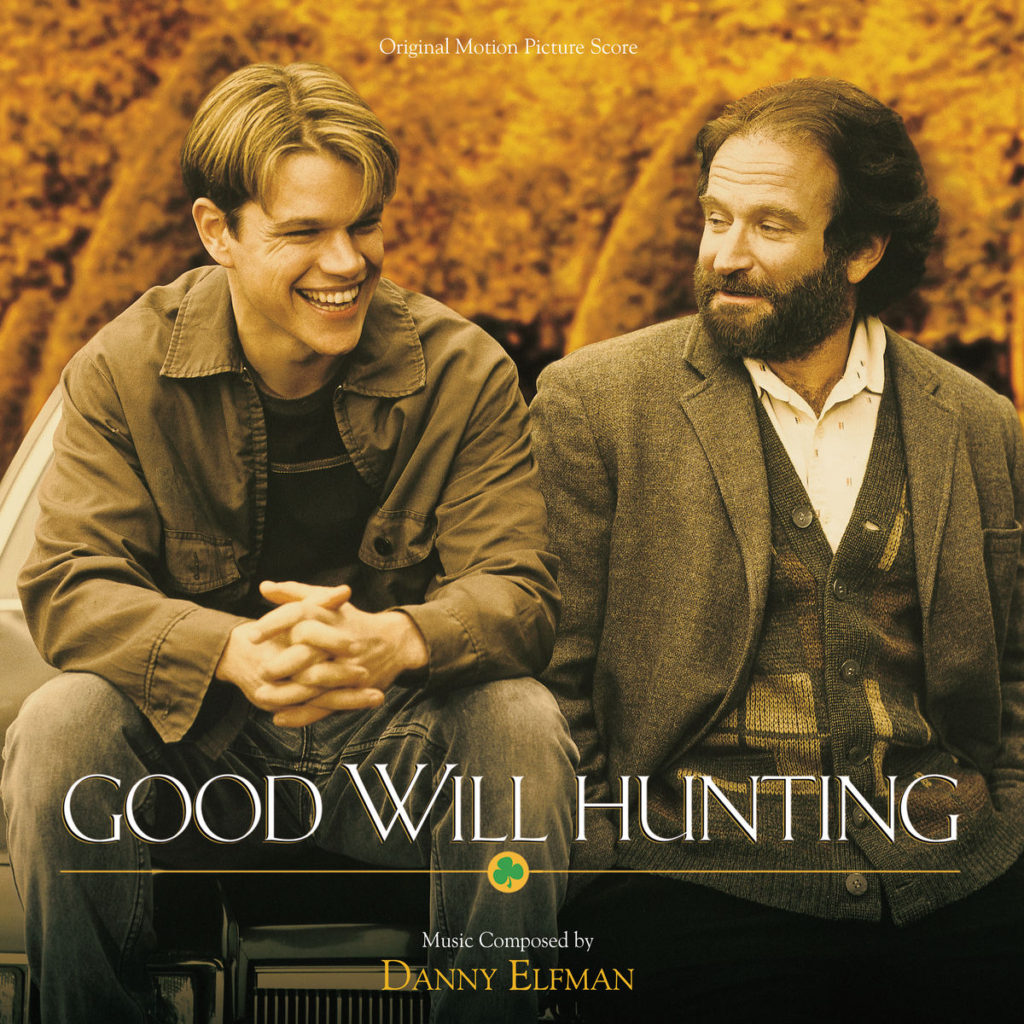
153
Elliott Smith’s breakout song was also – at least in my opinion – the finest track that he penned during his all-too-brief career. The theme to fellow Portlander Gus Van Sant’s 1997 film Good Will Hunting, “Miss Misery” didn’t exactly make Smith a household name, but it led to one of the first significant embraces of an indie artist by the pop culture mainstream.
I won’t give too much credit to the Academy of Motion Picture Arts and Sciences for nominating Elliott Smith for an Oscar. Good Will Hunting was a popular film whose creators had an intriguing backstory – at least the kind that the industry seems to enjoy highlighting every so often. For a film with nine nominations, a nod for its soundtrack wasn’t exactly a shock. What was even less of a shock was Smith ultimately losing out to the insufferable – and omnipresent – “My Heart Will Go On.”
Still, the nomination ultimately provided Smith with a brief, awkward moment in the spotlight. Legend has it that he had threatened to skip the ceremony, until he was informed that “Miss Misery” would be performed, with or without him. Smith is more than a bit endearing in footage from the telecast – staring at the floor in a wrinkled white suit – playing his beautiful little song while the gaudy string arrangement from a phantom orchestra is pumped over the loudspeakers.
It was evident to anyone watching that Smith wasn’t built for this moment – a fact that has only become clearer with the revelations that followed his death in 2003. Nevertheless, it still stands as something of a victory, for Smith, for Portland, for indie rock, and – most importantly – for a body of work that remains nothing short of arresting.
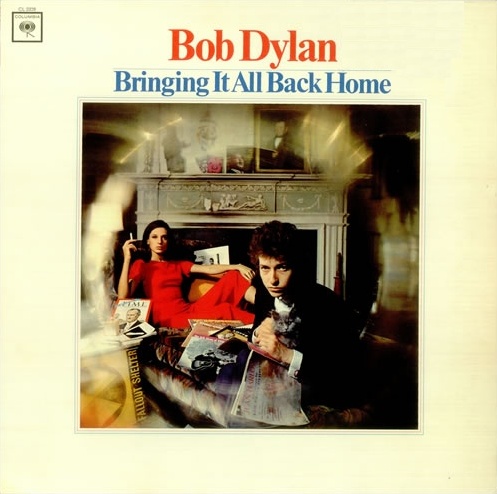
152
Recently it was announced that Bob Dylan had sold the publishing rights to his entire catalog for a figure rumored to be north of 300 million dollars. Good for him. I don’t begrudge Dylan for this move in the slightest, but what a thing it is to learn that something as priceless as the life’s work of – perhaps – America’s greatest artist can be valued like any old commodity.
The thing is, those songs are commodities. There’s no doubt that the Universal Music Publishing Group will make its money back time and again through streaming and licensing, and that the Dylan family’s financial stability will be secured for many generations to come. If the combination of genius and hard work are to be rewarded, than I guess this is a fitting compensation for being the voice of a generation.
To quote a phrase from Dylan’s latest album – a phrase that Dylan borrowed from Walt Whitman – what Universal bought “contains multitudes.” There are protest songs that gave a voice to the voiceless. There are heartbreaking odes to lost love. There are comebacks on top of comebacks, a never-ending well of sharp literary references, and moments of unspeakable beauty.
Then, there’s “Mr. Tambourine Man”: the moment in which Dylan truly began to play with language. He had already written great songs. Brilliant ones. However, with “Tambourine Man,” Dylan gave himself license to truly roam for the first time. It would open up a new world of possibilities, for himself, and for popular music as a whole. I never would’ve thought that you could put a price tag on such a thing, but apparently you can.
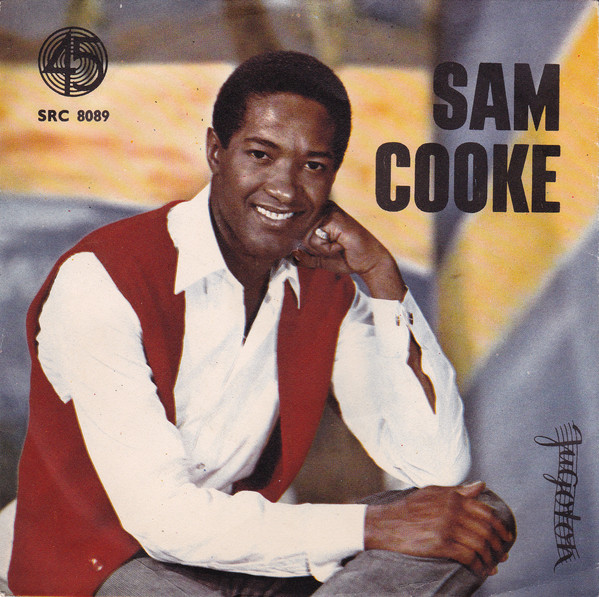
151
Sam Cooke is quite possibly the greatest singer in the history of American pop music. Therefore, it’s no small statement when I say that “Bring It on Home to Me” may feature the finest vocal performance of Cooke’s tragically brief career.
When it comes to “Bring It on Home to Me,” you have a couple of different – and equally great – versions to choose from. First, there’s the A-side to a 1962 single for Victor, in which he is joined on harmony vocals by Lou Rawls, who provides a terrestrial counterpart to Cooke’s heavenly vocals. The string arrangement of René Hall adds a polished sophistication to the track, but it’s a pleadingly raw soul number at its core.
Then there’s the show-stopping performance from Cooke’s posthumously released live album, At the Harlem Square Club. Recorded at the peak of his powers – in front of an enraptured audience – this take of “Bring It on Home” breaks the track down to its elemental core. Cooke pushes his band to a fever pitch, and they coax an otherworldly performance from him in return.
Sam Cooke was an icon, and a pioneer in the music industry when it came to business, politics, and artistic expression. We’ll hear from him once more before this list is over, but make no mistake: “Bring It on Home to Me” is just about as good as soul music gets.

